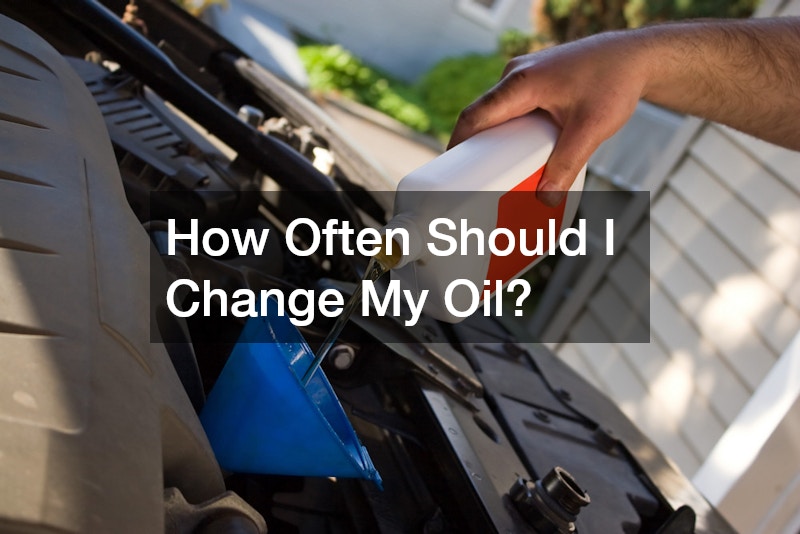In this article, we will explore essential car maintenance facts that can save you money and keep your vehicle in top shape. Auto shops often wish their customers were aware of these key points, as many common vehicle problems could be avoided with proper care. Understanding these car maintenance facts allows you to address issues early, reducing repair costs and extending the life of your vehicle. From regular oil changes to checking warning lights, each maintenance task plays a critical role in safety and performance. Whether you own a personal car, a work truck, or rely on fleet vehicles, these insights can help you make smarter decisions. Knowledge about car maintenance facts also improves communication with mechanics, making visits to auto body shops, engine services, or local semi trailer repair centers more productive. This guide will also touch on related services like auto glass repair companies, finance used car tips, and roadside assistance, showing how these elements connect to maintaining a reliable vehicle. By the end, you’ll understand the full scope of routine maintenance, enabling your car to run smoothly and last longer.
How Often Should I Change My Oil?

Regular oil changes are among the most fundamental car maintenance facts, yet many vehicle owners overlook their importance. Fresh oil keeps your engine running smoothly by reducing friction, removing contaminants, and protecting components from wear. Delaying oil changes can lead to engine damage, costly repairs, and decreased fuel efficiency.
Understanding Oil Types
Modern vehicles use various types of engine oils, including conventional, synthetic, and high-mileage formulations. Conventional oil works well for older vehicles, while synthetic oils provide better performance and protection under extreme temperatures. High-mileage oils contain additives that help reduce leaks and engine wear in vehicles with significant mileage. Selecting the correct oil type for your car can prevent engine problems and prolong the vehicle’s life. Local auto body centers and engine services often stress this point, as using the wrong oil can increase repair visits.
Recommended Change Intervals
The ideal frequency of oil changes varies depending on your car’s make, model, and driving habits. Many mechanics recommend changing conventional oil every 3,000–5,000 miles, while synthetic oils may last 7,500–10,000 miles. Trucks and commercial vehicles, especially those serviced at local semi trailer repair shops, may require more frequent oil changes due to heavier loads and extended mileage. Following the manufacturer’s guidelines ensures your engine stays properly lubricated.
Signs That Your Oil Needs Changing
Even with recommended intervals, there are signs that your oil may need changing sooner. Dark or gritty oil, unusual engine noises, and low oil levels are all indicators. Paying attention to these warning signs can prevent costly auto damage repair visits. Engine services and local auto body centers often see vehicles with neglected oil changes leading to broader mechanical issues, highlighting the importance of these basic car maintenance facts.
What Are the Warning Lights on My Dashboard Telling Me?
Modern vehicles are equipped with dashboard warning lights that provide essential information about your car’s health. Understanding these signals is one of the most important car maintenance facts for all drivers. Ignoring warning lights can lead to serious engine damage, brake failures, or electrical issues.
Common Warning Lights Explained
The check engine light, oil pressure light, battery alert, and brake warning signals are among the most common. Each light corresponds to a specific system, from engine performance to electrical components. Local auto body shops and engine services often advise that recognizing these lights early can reduce the likelihood of extensive repairs. Some lights may indicate minor issues, while others, like the engine or oil pressure alerts, require immediate attention.
Ignoring Warning Lights: The Risks
Ignoring warning lights can escalate minor problems into major repairs. For example, a blinking check engine light may signal misfiring cylinders, which can damage your catalytic converter if left unchecked. Brake system warnings ignored could compromise safety and result in expensive visits to local auto body centers. Awareness of these risks is a key component of car maintenance facts, ensuring that drivers take timely action.
When to Consult a Mechanic
If a warning light persists or appears repeatedly, consulting a trusted mechanic or visiting a local auto body center is essential. Mechanics can diagnose the issue using specialized tools and software, which reduces the risk of expensive auto damage repair. Car maintenance facts emphasize that proactive service is often less costly than emergency repairs, particularly for trucks and vehicles serviced by local roadside truck repair services.
How Do I Know When I Need New Tires?
Tires are your car’s only contact with the road, making their condition critical for safety and performance. Knowing when to replace tires is a core part of car maintenance facts that many drivers overlook. Properly maintained tires improve fuel efficiency, handling, and braking.
Tread Depth and Tire Health
Tread depth is the most reliable indicator of tire health. Tires with low tread lose traction, particularly in wet or icy conditions, increasing accident risk. Many auto shops use tread gauges or the penny test to check depth. Regular inspections help prevent emergency trips to auto damage repair centers or local roadside truck repair services when tires fail unexpectedly.
Understanding Tire Wear Patterns
Uneven tire wear can indicate alignment issues, worn suspension components, or improper inflation. Identifying these patterns early allows corrective action, protecting the vehicle from further damage. Auto shops often spot tire wear that suggests engine or chassis problems, which are easier to address when caught early.
The Importance of Tire Rotation
Rotating tires regularly ensures even wear, prolonging tire life and enhancing safety. Most mechanics recommend rotating tires every 5,000–7,500 miles. Regular rotation is one of the lesser-known car maintenance facts that can save money by avoiding premature tire replacement and reducing visits to local auto body centers for associated repairs.
What Fluids Should I Regularly Check?

Fluids are the lifeblood of your vehicle, keeping all systems running efficiently. Understanding which fluids to monitor is a vital set of car maintenance facts. Checking fluids regularly prevents engine wear, brake failures, and transmission damage, reducing visits to local auto body centers, engine services, and auto glass repair companies in case of accidents caused by fluid-related malfunctions.
Essential Vehicle Fluids to Monitor
Critical fluids include engine oil, coolant, brake fluid, transmission fluid, power steering fluid, and windshield washer fluid. Each plays a key role in vehicle operation. Low coolant or transmission fluid can cause overheating or slipping gears, while brake fluid deficiencies reduce braking power. Trucks and semi-trailers serviced at local semi trailer repair centers may have additional fluid considerations for heavy-duty operations.
How to Check Fluid Levels
Most fluids can be checked using dipsticks, reservoirs, or sight glasses. Properly checking levels involves parking on a level surface and reading measurements when the engine is cool. Many drivers rely on auto shops or engine services for guidance initially but can easily learn this as part of routine maintenance.
Can I Handle Basic Maintenance Myself?
Many car owners can perform simple maintenance tasks at home, saving time and money. However, understanding your limits is one of the essential car maintenance facts. While some repairs are straightforward, others require professional expertise, especially when dealing with trucks or vehicles serviced by local semi trailer repair shops.
Tools You Should Have
Basic tools include a wrench set, screwdrivers, tire pressure gauge, funnel, and jack. These allow you to tackle simple tasks such as topping off fluids, replacing wiper blades, or rotating tires. Auto shops and local auto body centers often recommend keeping these tools on hand, as they make small maintenance jobs easier and reduce dependency on engine services or auto glass repair companies for minor tasks.
Simple Maintenance Tasks to Try
Tasks suitable for DIY include checking tire pressure, topping off engine oil, inspecting brake pads, and cleaning battery terminals. Following these steps not only reinforces car maintenance facts but also helps you spot potential issues before they become serious. Performing these tasks regularly can reduce trips to auto body shops and prevent minor problems from escalating into major auto damage repair needs.
When to Leave It to the Pros
Complex repairs such as engine diagnostics, transmission repairs, or collision damage should be handled by professionals. Visiting a trusted local auto body center or engine service ensures safety and quality work. Understanding this distinction between DIY tasks and professional repairs is a key component of car maintenance facts, keeping vehicles reliable and minimizing costly mistakes.
What’s the Lifespan of My Battery?
A vehicle’s battery is critical for starting the engine and powering electrical systems. Knowing the typical lifespan and maintenance requirements is one of the car maintenance facts that many drivers overlook. A failing battery can leave you stranded, often requiring roadside assistance or visits to local auto body centers and auto glass repair companies if an accident occurs.
Signs of a Failing Battery
Indicators of a weakening battery include slow engine cranking, dim headlights, electrical component malfunctions, and a swollen battery case. Recognizing these signs early allows timely replacement, preventing emergency situations that might require local roadside truck repair services or towing.
Battery Maintenance Tips
Regularly cleaning battery terminals, checking voltage, and ensuring a secure connection can extend battery life. Keeping the battery charged and avoiding excessive short trips also helps. Many engine services and auto shops stress that small maintenance habits make a significant difference in longevity.
When to Replace Your Battery
Most car batteries last three to five years. If your battery consistently struggles to start the engine or fails load tests, replacement is necessary. Following this car maintenance fact prevents being stranded and avoids expensive auto damage repair related to electrical failures.
How Do I Keep My Car’s Exterior in Good Shape?

Maintaining your vehicle’s exterior protects its value and ensures it looks great. Car maintenance facts highlight the importance of caring for paint, glass, and trim. Neglecting the exterior can lead to rust, scratches, and costly repairs at auto body shops or auto glass repair companies.
Importance of Regular Washing
Washing your car removes dirt, salt, and grime that can damage paint. Regular cleaning prevents long-term corrosion and keeps surfaces smooth. Vehicles that frequently travel on highways or in winter conditions may require more frequent washes to prevent rust and maintain appearance.
Waxing vs. Sealing
Waxing adds a protective layer that repels water and contaminants, while paint sealants provide longer-lasting protection. Both are crucial for preserving your car’s finish and preventing minor scratches from developing into larger problems. Local auto body centers often recommend combining both techniques for trucks or vehicles exposed to heavy use.
What Are the Benefits of Regular Inspections?
Routine vehicle inspections help detect problems before they escalate, saving money and improving safety. Understanding the value of inspections is an essential set of car maintenance facts, particularly for trucks or commercial vehicles that rely on local semi trailer repair services and engine services.
Preventative Maintenance Explained
Preventative maintenance involves scheduled checks and replacements to keep vehicles operating efficiently. This includes oil changes, brake checks, tire rotations, and fluid monitoring. Following preventative schedules reduces emergency auto damage repair needs and ensures compliance with insurance requirements from auto insurance agencies.
What Happens During a Vehicle Inspection
Inspections typically cover brakes, tires, fluids, battery, lights, and engine performance. Mechanics may also evaluate structural integrity, alignment, and exhaust systems. Auto body shops, local auto body centers, and engine services provide thorough inspections, giving peace of mind that the vehicle is safe and well-maintained.
How Do I Choose a Reliable Auto Shop?

Choosing the right auto shop is vital for maintaining your vehicle’s performance and longevity. Understanding how to identify trustworthy providers is a key component of car maintenance facts, ensuring quality repairs and ongoing vehicle support.
Researching Auto Shops
Start by researching local auto body shops, engine services, and local semi trailer repair centers. Check certifications, experience, and the types of services offered. Auto glass repair companies, engine services, and roadside assistance providers should also be considered if your vehicle is involved in collisions or glass damage incidents.
Questions to Ask Potential Shops
Ask about service warranties, pricing transparency, and experience with your vehicle type, whether it’s a personal car or truck. Discuss insurance processes with auto insurance agencies to understand coverage for auto damage repair. Inquiring about parts sourcing and repair timelines ensures clarity and avoids surprises.
Understanding these essential car maintenance facts empowers vehicle owners to make informed decisions, save money, and enhance safety. By paying attention to oil changes, warning lights, tire health, fluid levels, brakes, batteries, and exterior care, you prevent costly repairs and extend the life of your vehicle. Regular inspections and selecting a reliable auto shop further support ongoing performance and reliability. Leveraging services such as auto body shops, local auto body centers, engine services, auto glass repair companies, and even local semi trailer repair providers ensures comprehensive care. Awareness of car maintenance facts also improves interactions with auto insurance agencies, finance used car options, and local roadside truck repair services when emergencies arise. Ultimately, proactive maintenance and informed decision-making help keep your vehicle safe, functional, and enjoyable to drive, highlighting the full value of understanding these essential car maintenance facts for both cars and trucks alike.



